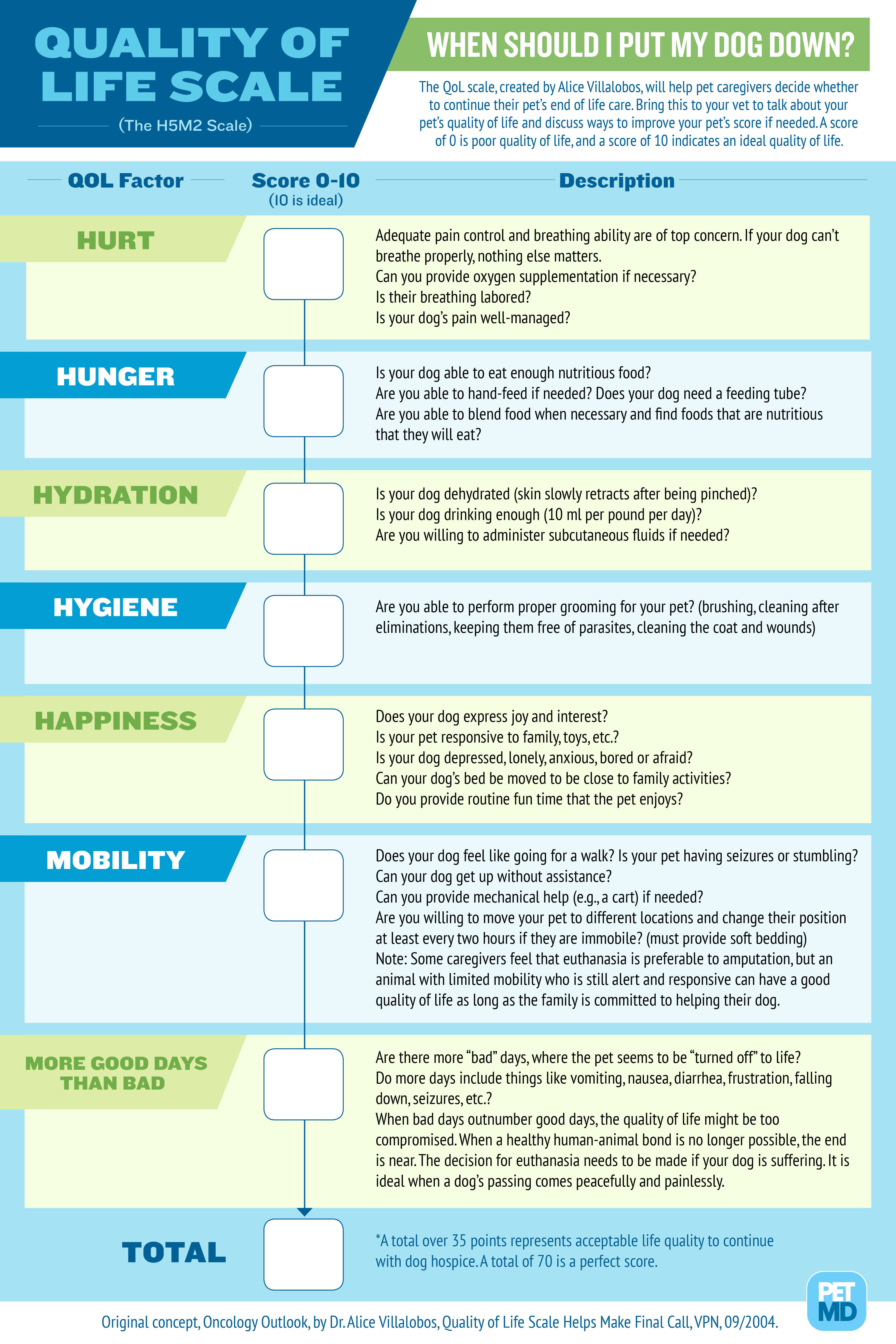Dogs understand a lot. They can recognize human words, gestures, and emotions, and learn to work as service dogs or emotional support animals. But do dogs know when they are dying?
Through my work as a general practitioner, and as a pet parent myself, I have observed many moments leading up to a dog’s death. Even though I’ve participated in these experiences, there’s no way to know for certain what’s going through a dog’s mind in their final moments.
We do know, however, that they are at least aware that death is near by sensing the changes that are happening in their bodies.
Can Dogs Sense Death?
It’s been shown that dogs have uncanny abilities to detect medical issues, such as cancer, oncoming episodes of medical crisis (such as seizures), or anxiety. There is anecdotal evidence that dogs can also sense death, but how they process and perceive this information is still being debated and researched.
Dogs have a strong sense of smell that allows them to pick up on changes that can happen to a body. Research has shown that dogs can literally smell things like stress in humans. Changes associated with death occur months before the event takes place. These changes can affect subtle differences in the smell of a person or another animal, an indicator that death is near.
When it comes to the possibility of their own death, they are at least aware that they are not feeling well or are sick. They can also sense our levels of stress and know that something is wrong. However, canine companions are not as self-assessing as humans about death. They don’t assign meaning and complex emotions to it; it’s just a fact that it happens.
How Do Dogs Act When They Are Near Death?
There are four stages of death, and dogs typically show different symptoms and behaviors in each. Euthanasia is an active, intentional process that you can have a vet perform at various stages of disease or at any point during the process of dying.
You will want to have the conversation about when to euthanize as soon as your pet’s quality of life is declining, so you can make the decision when needed. This will usually come before your pet reaches stage 3 or 4 of the dying process, which will relieve discomfort and pain that come with those stages.
Stage 1
The first stage of death typically occurs about three months prior to death. During this time, you may notice some or any of these signs:
-
Weakness
-
Being pickier about eating
-
Paying less attention to grooming
-
-
-
Random vocalizations
-
Changes in their sleeping schedule
-
Wanting to be alone more
-
Drinking more or less than usual
-
Changes to their daily routine
Stage 2
The second stage of death may start around three weeks prior to death. You may see some of these signs:
It may be during this phase that you’ll need to decide whether to euthanize. It may be that your pet’s quality of life has significantly declined due to incontinence and significant changes in appetite. Or you might see a positive change in their quality of life—such as being more active, eating more, and seeking affection from loved ones—and decide to hold off for a bit longer.
It is OK to want to enjoy this time before your dog continues to progress in dying. Just keep in mind that your canine companion is not getting better and that the dying process will continue.
Stage 3
The third stage of death may begin about three days prior to death. This is the time to check in again with your vet about whether it’s time to euthanize. During this time, your pet may have:
-
Congestion that sounds more like rattling
-
Cold limbs
-
An increase in mucus production from the eyes, nose, or mouth
-
Trouble swallowing
-
An increased risk of falling
Your dog will not be as aware of what is going on in their body and will be preparing themselves for death. It is not uncommon for your dog to visit their food bowls but not eat.
Stage 4
The fourth stage is the act of dying itself, which can start about 3-4 hours prior to death. During this stage, your dog:
-
Will not be able to track any movement or sounds with their eyes
-
May have twitching in their body
-
May have irregular breathing
-
May have pale gums
You don’t want to wait until this stage to euthanize, because there is not enough time to get your dog to the hospital or for an at-home team to get to you. If this happens, see if a mobile service or your regular vet can give you support over the phone. You can also chat with a licensed veterinary professional online (or do a video call) to talk you through Chewy’s Connect With a Vet.
Making the Decision to Euthanize
While the ability to end suffering is a gift that we can give to our canine companions, the decision can be difficult. Pet parents do not want to see their dog suffer, and they also do not want to end their dog’s life because of one bad day, when there may be many good days beyond that point.
It’s helpful to have a plan in place and use Quality of Life resources developed by vets for this exact purpose. Use these Quality of Life guidelines and worksheets and work with your vet to determine if there really are more bad days than good:

You know your dog best, and your vet can give you an objective viewpoint on your pet’s pain level and options. While a Quality of Life scale is not an exact science, it can help give you the confidence needed to make the most difficult decision to let go.
How to Comfort a Dying Dog
I have seen dogs whose families did not want to be around during the final moments. I have also seen dogs with many family members present during the final moment.
There are a variety of reasons for choosing to leave or stay for the euthanasia process.
Being present can be helpful for your canine companion, and it can also be therapeutic for you by giving a sense of closure. During euthanasia, it is not uncommon for a canine companion to look at and seek out their pet family during their final moments.
If euthanasia can be scheduled, it can be comforting to your dog to be surrounded by familiar things like a favorite stuffed animal or blankie. At-home euthanasia with a veterinarian can also be more comforting if it’s possible.
Euthanasia can be scary for pet parents. No one wants to see their canine companions in pain.
Some pet parents do not want to see their pet’s final moments as a medical procedure, and that is OK too.
The ability and decision to euthanize when your pet is in pain and cannot be cured is an act of love, and it’s not a solitary experience. Members of the veterinary team are active participants as well. The age-old medical goal of “do no harm” is present in everything that a veterinary team does for pets.
Talking to the veterinary team about what the procedure may look like, the options available (at-home or in-office euthanasia), and post-euthanasia arrangements can help alleviate some of the negative feelings and thoughts about the euthanasia process.
Featured image: iStock.com/mladenbalinovac
References
- American Animal Hospital Association Certification Course. Hospice and Palliative Care Module 4: Understanding Death: What to expect from the dying patient.
- Coren, Stanley, PhD., DSc, FRSC. Psychology Today. Can Dogs Sense When Someone Is About to Die? May 2009.
- Marples, Megan. CNN. Dogs Can Smell When Humans Are Stressed, Study Suggests. September 2022.




